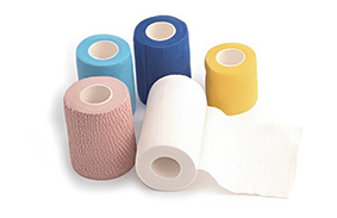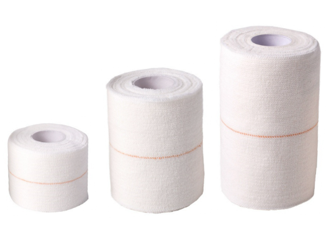
- English
- Español
- Português
- русский
- Français
- 日本語
- Deutsch
- tiếng Việt
- Italiano
- Nederlands
- ภาษาไทย
- Polski
- 한국어
- Svenska
- magyar
- Malay
- বাংলা ভাষার
- Dansk
- Suomi
- हिन्दी
- Pilipino
- Türkçe
- Gaeilge
- العربية
- Indonesia
- Norsk
- تمل
- český
- ελληνικά
- український
- Javanese
- فارسی
- தமிழ்
- తెలుగు
- नेपाली
- Burmese
- български
- ລາວ
- Latine
- Қазақша
- Euskal
- Azərbaycan
- Slovenský jazyk
- Македонски
- Lietuvos
- Eesti Keel
- Română
- Slovenski
- मराठी
- Srpski језик
Light Elastic vs. Elastic Adhesive Medical Bandages: Choosing the Right Wrapping Method for Better Scientific Wound Care
In daily life, accidental injuries are difficult to completely avoid, and wound dressing is an important part of dealing with injuries. Among them, "light medical bandage" and "heavy medical bandage" are two common methods of bandaging, and due to the different pressures applied, their application scenarios and effects also have significant differences. Correct understanding and application of these two methods are crucial for the effective recovery of wounds.
Lightly stretching the bandage means that during the bandaging process, the tension of the bandage is relatively low and the wrapping is rather loose. Its main function is to fix the dressing and protect the wound, preventing secondary contamination or injury. This method is suitable for general superficial wounds, such as minor abrasions and cuts. When bandaging, the principle should be to not affect the local blood circulation, emphasizing comfort, but the effects of stopping bleeding and reducing swelling are relatively limited.

On the contrary, the reinforced bandage applies greater pressure during the wrapping process, with the bandage wrapped more tightly. It is mainly used for stopping bleeding, reducing swelling, and assisting in stabilizing the wound or fracture site. It is often used in cases of significant bleeding, subcutaneous tissue damage, or joint sprains. It should be noted that the wrapping pressure should be moderate, so as to effectively apply pressure without hindering blood circulation. Otherwise, it may lead to complications such as tissue ischemia.

Professional medical staff remind the public that they should learn to choose the appropriate bandaging method based on the type, location and severity of the wound. For minor wounds, they can handle them by themselves and use a light elastic bandage. However, for cases with heavy bleeding, deep trauma or accompanied by fractures, they should first use a heavy elastic bandage to apply pressure to stop the bleeding and then seek medical attention as soon as possible.
Scientific care begins with details. Mastering the differences and applications between light and heavy bandaging techniques can not only enhance one's ability in home first aid, but also provide a safer guarantee for the recovery of the injured.



